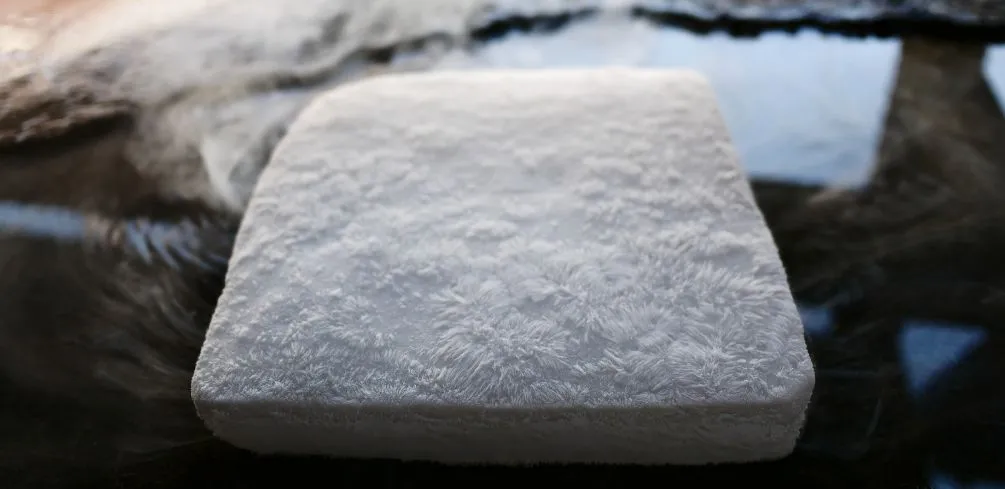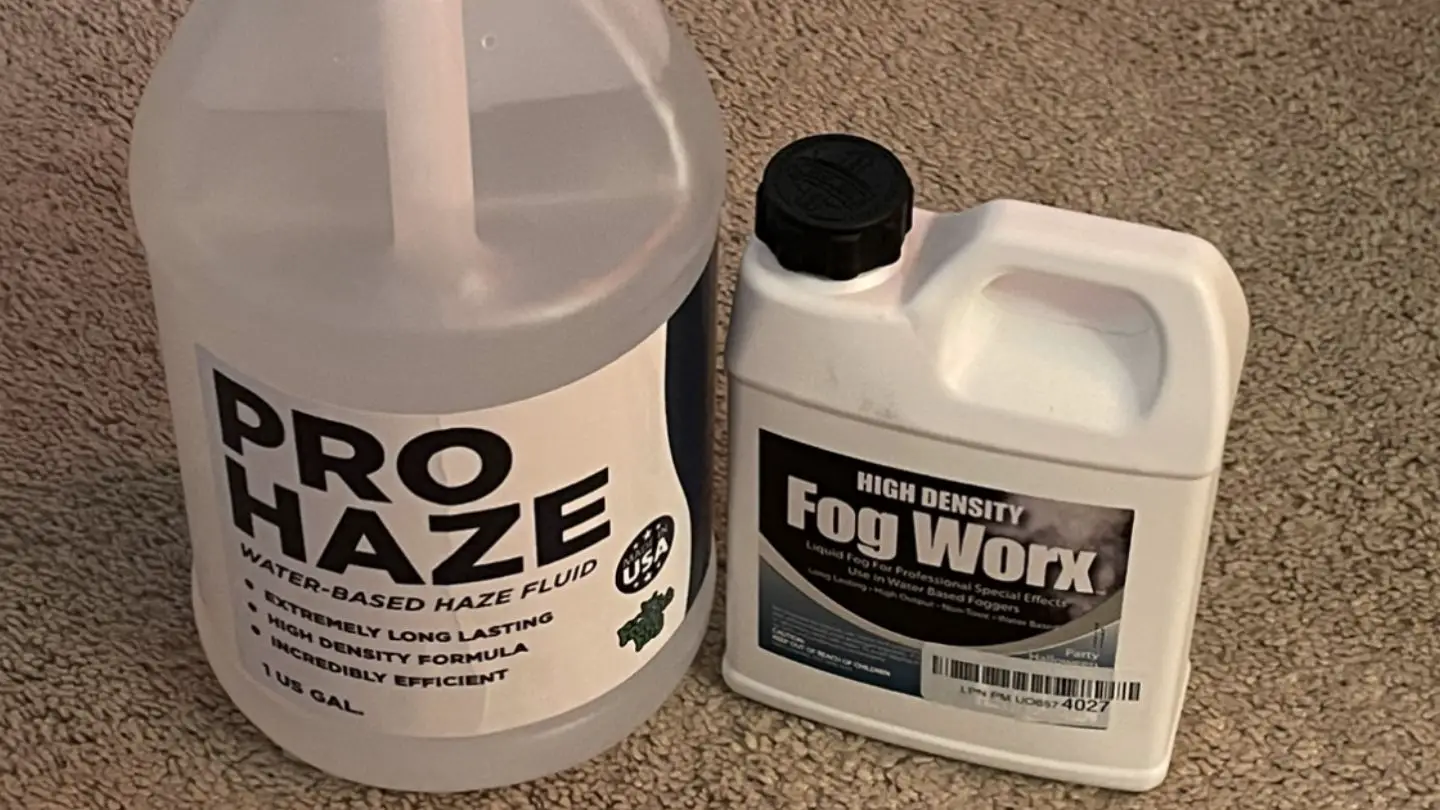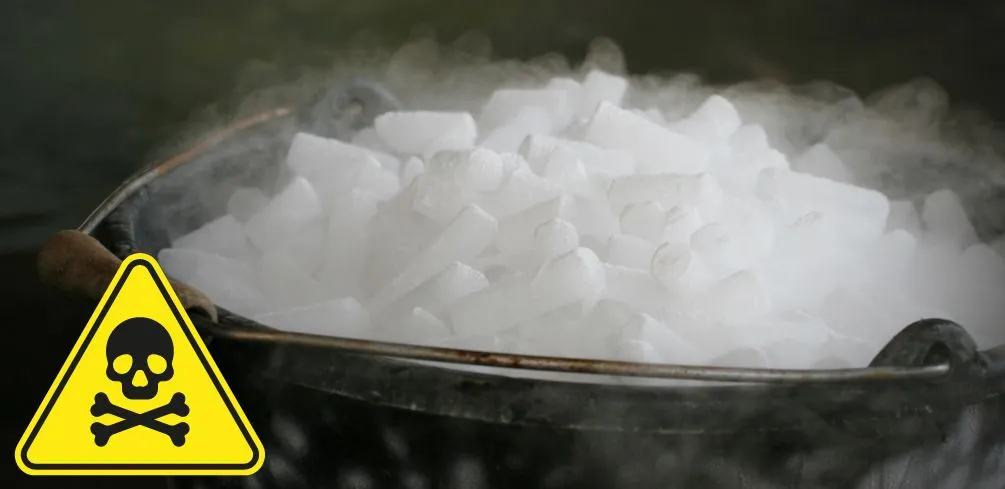Do you ever wonder what dry ice is and how it can be used? Dry ice is a solid form of carbon dioxide with temperatures as low as -109°F. It’s widely used in many industries, from food production to theatrical effects.
But have you ever thought about getting rid of dry ice once you’re done using it? In this blog post, we’ll discuss the basics of dry ice, including its properties and handling techniques, explore different applications for which it can be useful, highlight the benefits associated with using this versatile substance, and finally answer the question: how do you get rid of dry ice?
What is Dry Ice?
Dry ice is a solid form of carbon dioxide, which is produced by freezing liquid CO2 at -109.3°F (-78.5°C). It has a unique appearance and properties, making it useful in many applications.
Definition of Dry Ice:
Dry ice is the frozen form of carbon dioxide (CO2) gas, which appears as white flakes or pellets with no odor or taste. Unlike regular ice cubes, dry ice does not melt but instead sublimates directly from a solid to a gas when exposed to warmer temperatures.
This process causes the characteristic fog-like effect seen when dry ice is used for special effects purposes such as Halloween decorations and theatrical performances.
Properties of Dry Ice:
Dry ice has several unique properties that make it an ideal choice for certain applications, including cooling, cleaning, and special effects purposes. Its low temperature makes it effective for keeping items cold without melting into the water like regular ice would do; its ability to sublimate quickly allows it to be used safely in enclosed spaces; and its lack of moisture prevents mold growth on surfaces where it’s applied.
Due to its low temperature and ability to sublimate quickly, dry ice can be used in many different ways ranging from cooling food products during transport or storage to creating dramatic special effects such as smoke machines or fog machines for theatrical productions or parties/events.
It can also be used for cleaning purposes due to its lack of moisture preventing mold growth on surfaces where it is applied; this makes it ideal for removing grease buildup from kitchen appliances or other hard-to-reach areas that are difficult to clean with traditional methods.
Dry ice is a solid form of carbon dioxide and has many uses, from cooling to fog machines. It’s important to know how to safely handle and dispose of dry ice in order to prevent any accidents or injuries. Next, let’s explore the best ways to get rid of dry ice.
Quick Summary: Dry ice is a frozen form of carbon dioxide that sublimates directly from a solid to a gas when exposed to warmer temperatures. It has several unique properties, including its low temperature, ability to sublimate quickly, and lack of moisture which make it an ideal choice for cooling food products during transport or storage, creating special effects such as smoke machines or fog machines for theatrical productions, or parties events, and cleaning grease buildup in hard-to-reach areas.
How to Handle and Store Dry Ice?
Safety Precautions for Handling Dry Ice:
When handling dry ice, it is important to wear protective gloves and clothing, as extreme cold can cause frostbite. It is also important to avoid breathing in the gas that is released when dry ice sublimates, as this can be hazardous if inhaled in large quantities.
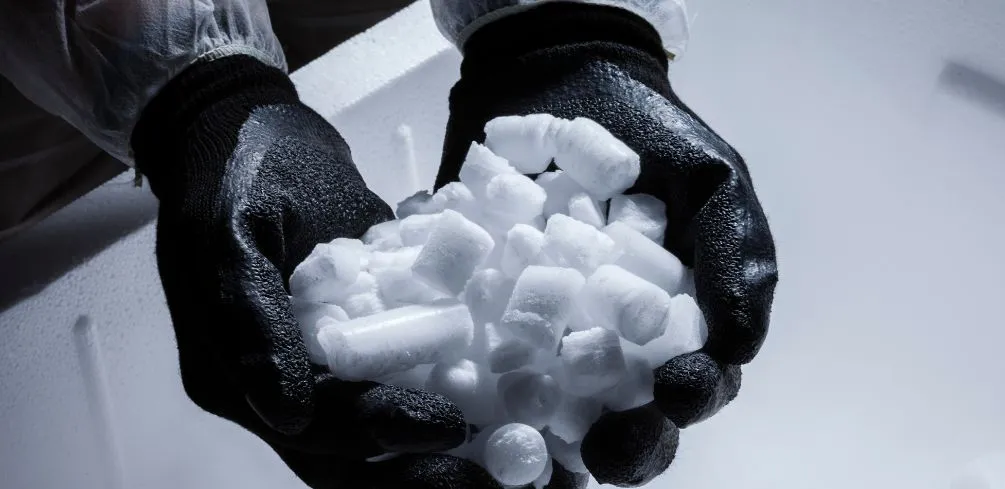
Proper Storage of Dry Ice:
Dry ice should always be stored in an insulated container with a tight-fitting lid or cover. The container should be kept away from any sources of heat, such as stoves or radiators, and out of direct sunlight. If storing for long periods of time, check on the container regularly to ensure that all the dry ice has been used up before it begins to melt and create a mess.
Disposing of dry ice properly is essential for safety reasons. Never dispose of dry ice by pouring it down drains or toilets; instead, use tongs or other tools to place it into a plastic bag which can then be placed outside in a well-ventilated area until all the gas has dissipated safely into the atmosphere
It is important to take the proper safety precautions when handling and storing dry ice, as it can be dangerous if not handled correctly. The next heading will discuss how to use a fog machine, diffuser, or humidifier safely and effectively.
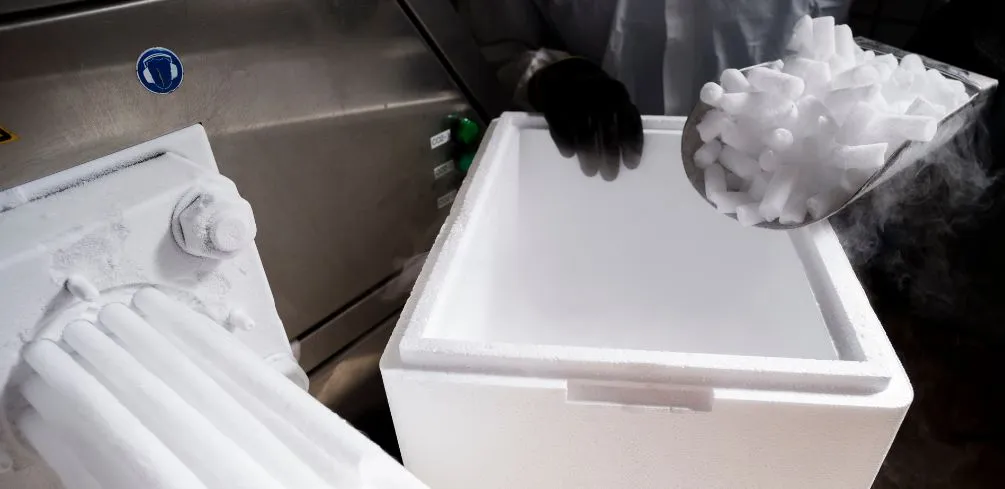
How to Use Dry Ice in Different Applications?
Dry ice is a versatile material that can be used in many different applications. It has the unique ability to sublimate, meaning it turns from solid to a gas without ever becoming liquid. This makes it an ideal choice for cooling, special effects, and cleaning purposes.
Using Dry Ice for Cooling Purposes:
Dry ice is often used as a substitute for traditional refrigeration methods due to its low temperature and long-lasting effects. It’s commonly found in grocery stores, where it’s used to keep food items cold during transport or while on display.
Additionally, dry ice can also be used in combination with regular ice cubes when packing coolers for camping trips or other outdoor activities. The dry ice will help keep the contents of the cooler colder longer than just using regular cubes alone would do.
Using Dry Ice for Special Effects:
One of the most popular uses of dry ice is creating foggy atmospheres at parties or events like Halloween celebrations or haunted houses. To create this effect, you need a fog machine that heats up water and then pumps it through a container filled with crushed dry ice pellets, which creates smoke-like clouds that linger around until they evaporate into thin air again over time.
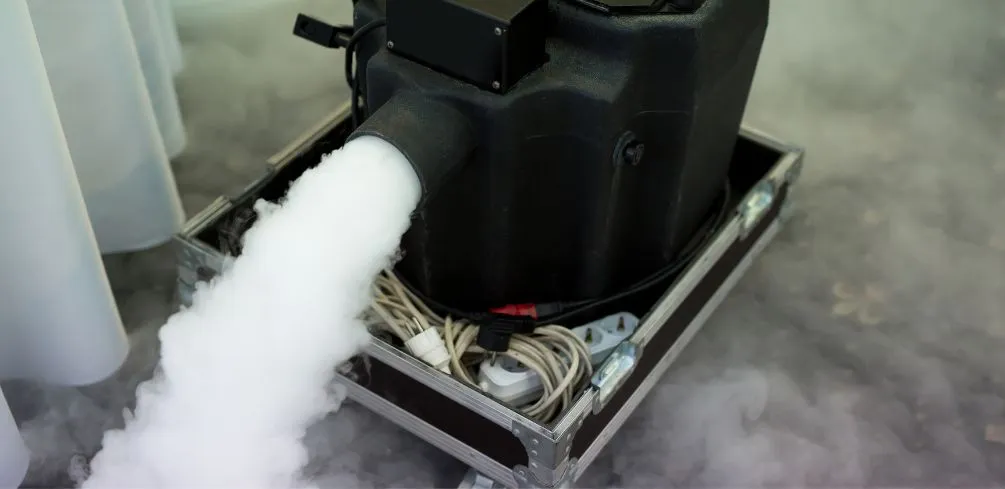
You can also use dry ice inside balloons filled with helium so they float down slowly instead of quickly falling back down to earth when released outdoors – making them perfect decorations for any occasion!
Another great use of dry ice is cleaning hard surfaces such as tile floors, countertops, and even car exteriors. This can be done by blasting away dirt particles with pressurized air containing tiny pieces of frozen carbon dioxide crystals that act like sandpaper on tough stains and grime buildup without damaging the surface itself too much (if done correctly).
This method works especially well on grease stains since it breaks them down quickly without leaving behind any residue afterward, either. Dry ice can be used for a variety of purposes, from cooling to special effects. The next heading will discuss how to safely and effectively use dry ice in fog machines, humidifiers, and diffusers.
Quick Summary: Dry ice is a versatile material that can be used in many different applications, including cooling, special effects and cleaning. It has the unique ability to sublimate from solid to gas without ever becoming liquid. Cooling uses include grocery stores for keeping food items cold during transport or display and packing coolers for camping trips or other outdoor activities. Special effects such as foggy atmospheres at parties or events like Halloween celebrations can be created using dry ice in combination with a fog machine. Cleaning hard surfaces such as tile floors, countertops and car exteriors can also be done by blasting away dirt particles with pressurized air containing tiny pieces of frozen carbon dioxide crystals.
What are the Benefits of Using Dry Ice?
Using dry ice has many benefits that make it a great choice for a variety of applications. Dry ice is an effective and cost-efficient cooling agent, can be used to create special effects, and offers environmental and health advantages over other cooling methods.
Cost Savings from Using Dry Ice:
Dry ice is significantly cheaper than traditional refrigerants like Freon or ammonia, making it the most cost-effective way to cool food or beverages in large quantities. It also eliminates the need for bulky equipment such as freezers or chillers, saving money on electricity bills. Additionally, because dry ice evaporates quickly when exposed to air, there’s no need to worry about disposing of melted water after use.
Environmental Benefits of Using Dry Ice:
Unlike other refrigerants, which contain harmful chemicals that can damage the environment if released into the atmosphere, dry ice does not release any pollutants when it sublimates (evaporates).
This makes it an ideal option for those looking for an eco-friendly alternative to traditional cooling methods. In addition, its low melting point means that less energy is required during production compared with regular ice cubes made with tap water.
Health Benefits of Using Dry Ice:
Dry ice has been proven safe by numerous studies conducted by both governmental agencies and independent researchers alike; however, due to its extremely cold temperature (-109°F), direct contact should be avoided at all times as skin burns may occur if left unprotected.
When handled properly with protective gloves and clothing, however, dry ice poses no health risks whatsoever – making it a great choice for those looking for a safe yet efficient way of keeping their food fresh while avoiding potentially hazardous chemicals found in other refrigerants like Freon or ammonia gas.
Using dry ice can offer a variety of benefits, from cost savings to environmental and health benefits. Next, we’ll explore how to obtain dry ice.
Quick Summary: Dry ice is an effective and cost-efficient cooling agent with many benefits, including cost savings, environmental friendliness, and health safety. It is cheaper than traditional refrigerants like Freon or ammonia and does not release any pollutants when it evaporates. Additionally, dry ice poses no health risks when handled properly with protective gloves and clothing.
Where Can You Buy or Rent a Machine to Make Your Own Dry Ice?
When it comes to buying or renting a machine to make your own dry ice, there are several options available. Buying a machine is the most cost-effective way to get started with making your own dry ice.
There are many different types of machines on the market that can be used for this purpose, ranging from small tabletop models to large industrial-grade units. The size and features of the machine you choose will depend on how much dry ice you plan on producing and what type of applications you intend to use it for.
Renting a machine is another option if you don’t want to commit to purchasing one outright. Many companies offer rental services where they will provide all the necessary equipment and supplies needed for making your own dry ice at an affordable rate.
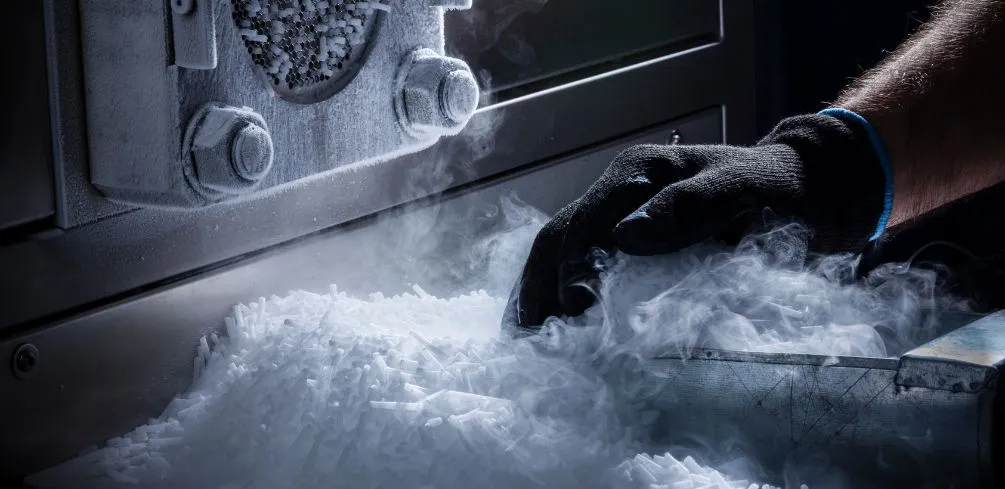
This can be a great solution if you only need the machine occasionally or don’t have enough space in your home or business for permanent storage of such an item.
Finally, there are suppliers who sell pre-packaged dry ice that can be used in various applications without having to buy or rent any additional equipment. This may not always be as cost-effective as making your own. Still, it does eliminate some of the hassle associated with owning and operating a dedicated machine for this purpose.
No matter which option you choose, it is important to take safety precautions when handling and storing any form of dry ice, as its extremely cold temperatures can cause serious injury if handled improperly.
Additionally, proper disposal should also be considered since leaving excess amounts lying around could potentially damage property or even harm people nearby due to its low-temperature properties.
If you’re looking to make your own dry ice, there are various options available for purchase or rental. In the next section, we’ll look at how to find suppliers of prepackaged dry ice.
FAQs in Relation to “How Do You Get Rid of Dry Ice”
Conclusion
It can be used to cool food or drinks, create fog effects in theatrical performances, or even as a refrigerant. Knowing how to handle and store it properly is essential for safety reasons. If you are looking to buy or rent a machine that makes your own dry ice, there are several options available on the market today.
Do you get rid of dry ice? Not necessarily – with proper handling and storage techniques, it can be reused multiple times before needing to be disposed of safely.
Next, check out our article about the best dry ice fog machine.
Please be careful and use at your own risk
None of the authors, contributors, administrators, or anyone else connected with Wild Fog, in any way whatsoever, can be responsible for your use of the information contained in or linked from these web pages.

